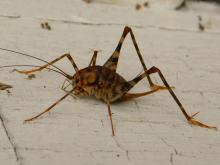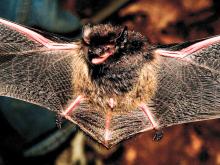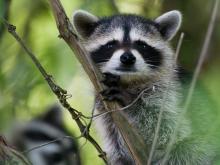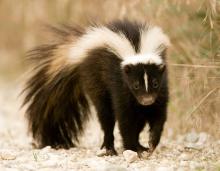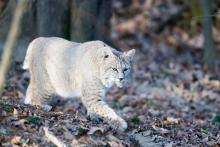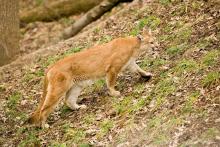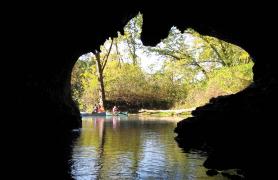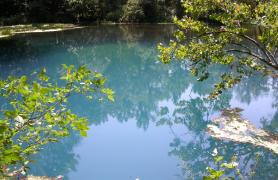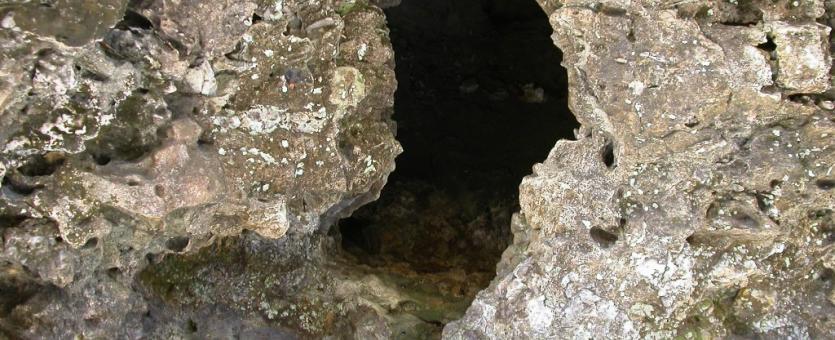
Long ago created by water, but now high and dry, terrestrial caves are home to a variety of animals, but because of the dark, very few plants. Many mammals, including foxes, skunks, and bobcats, seek temporary shelter in these caves. The basis of the food chain in such caves is not plants but organic detritus, including corpses of cave animals and dung. Dry caves’ most famous inhabitants are bats. Gray bats and several other bat species roost in terrestrial caves, and the nutrients in their guano are the foundation of a diverse animal community.
Terrestrial caves are often linked with bluffs and glade habitats, with their important plant and animal species, and with riparian (streamside) habitat below. Many dry caves contain — or used to contain — prehistoric human artifacts. It is illegal to remove, damage, or destroy such archeological treasures.
Caves, springs, sinkholes, and natural bridges are all features of karst regions. Much of Missouri is a karst landscape of porous limestone and dolomite with deep fissures.
How Terrestrial Caves Are Formed
In karst regions like ours, caves are formed when slightly acidic groundwater seeps down through cracks in limestone or dolomite, slowly dissolving the rock. The cracks widen to form cavities and eventually a subterranean drainage system. The creeks that flow through caves come from surface water that has seeped downward.
Sometimes, due to the continuing dissolution of the mildly acidic water, the rock and soil above a cavern collapses downward, creating a sinkhole.
When a cave is below the water table, it is filled entirely with water. (Well-drillers search for these water-filled pockets.) When the cave is above the water table, the cave has air in it and its water flows ever downward.
Some of our largest caves formed ages ago as completely water-filled cavities. Over geologic time, the Ozark Plateau was uplifted, and rivers carved valleys ever deeper into the bedrock, creating bluffs and causing cave passages to be above the water table and to drain.
When a cave passage is elevated high enough above the water table, the cave floor is usually never saturated with water — this is a terrestrial, or dry cave.
Terrestrial Cave Subtypes
Understanding some subtypes will help you understand the category as a whole.
Dry Caves
Dry caves are raised high enough above the water table that there is no significant or permanent water. However, in different areas within the cave, there can be varying amounts of moisture and humidity, depending on rainwater entering the cave and how the air flows within the passageways.
Entrances to dry caves usually occur on elevated hillsides, on high cliffs or bluffs, or in crevices. Passages usually branch inward with increasing complexity, like the branches of a tree.
Examples include Mark Twain Cave, Missouri's oldest commercial show cave. Rich with human history, it is a designated National Natural Landmark.
Dry Pit Caves
Dry pit caves are vertical shafts related to sinkholes, cliff crevices, or a fracture along a joint in bedrock. These openings descend to fairly dry cave floors, which are often littered with leaves, twigs, and surface soil that have fallen in from above. Animals occasionally fall into these pits and die from their injuries or from starvation; their bones often can be found among the other detritus that has collected.
Most dry caves and dry pit caves occur in the Ozark Highlands, especially on exposed cliffs in the Glaciated plains, especially in the Lincoln Hills.
Key species
